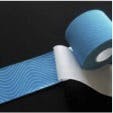Maybe you’ve seen the CrossFit Games on ESPN or possibly have a friend that has received positive results from joining CrossFit. You’re not alone as a lot of people around the world have been joining the CrossFit craze within the past few years. Maybe you’re even thinking about joining a CrossFit gym near your home in Frederick. Before you jump right into, you may want to read the rest of this blog in order to learn a little bit more about the methodology and potential injury risks of this high intensity workout routine.

CrossFit’s goal is to create a general fitness that focuses on functional exercises while incorporating a variety of workouts improving strength, speed and endurance. While focusing on functional activities that are actually used in sports, CrossFit workouts can include any combination of exercises from running to rowing to Olympic lifts to plyometrics. Generally speaking, most workout’s ultimate goal is to do the workout as fast as possible or as many repetitions as possible within a given time frame.This will encourage you to constantly improve upon previous workouts and never let you settle for anything less than your best. In addition, there are usually no designed rests between sets which can turn any regular workout into perhaps the most difficult workout you’ll ever try.
When performed properly, CrossFit can be a fun and motivating way to get into fantastic overall physical condition and prepare you for your sport. One of the great aspects of CrossFit is the constant variety of workouts which prevents boredom and will definitely keep you excited to continue towards your fitness goal. Another great aspect of CrossFit is the team atmosphere that reverberates throughout the gym. Support from the trainers and other CrossFitters will encourage you to keep going during a workout and encourage you to come back for more.
Just like any other workout regimen, it’s very important to take care of your body in order to limit the risk of injury. Proper technique is critical to limiting injury, especially in power lifts such as the dead lift and squat. Prior to doing an exercise during a CrossFit workout, be sure that you’ve mastered the technique and understand what it feels like when form is slipping due to fatigue. For example, a common compensation during the squat is rounding your back which can increase stresses on your back and can lead to injury. Be sure to take a break when you feel technique slipping in order to avoid these compensations. It’s better to do one correct repetition than 100 with poor technique.
Given the high demand of these workouts, make sure you take care of your body outside of the gym as well to decrease risk of injury. Proper nutrition and rest are key components to preparing your body both before and after workouts. Rest doesn’t just include getting proper sleep at night but also means proper rest between workouts. This means allowing 48-72 hours of rest before working out the same muscle group.

Whether you’ve already begun CrossFit training or you’re interested in doing so, be sure to exercise smart and never sacrifice quality for quantity. The compensations that follow will inevitably lead to imbalances, pain and eventual injury. Understand that high intensity training should only be utilized by those in top physical condition and have been training for an extended period of time. If you have any questions, our wellness team at Superior Physical Therapy & Sports Rehab can help prepare you to begin this high intensity workout program.



